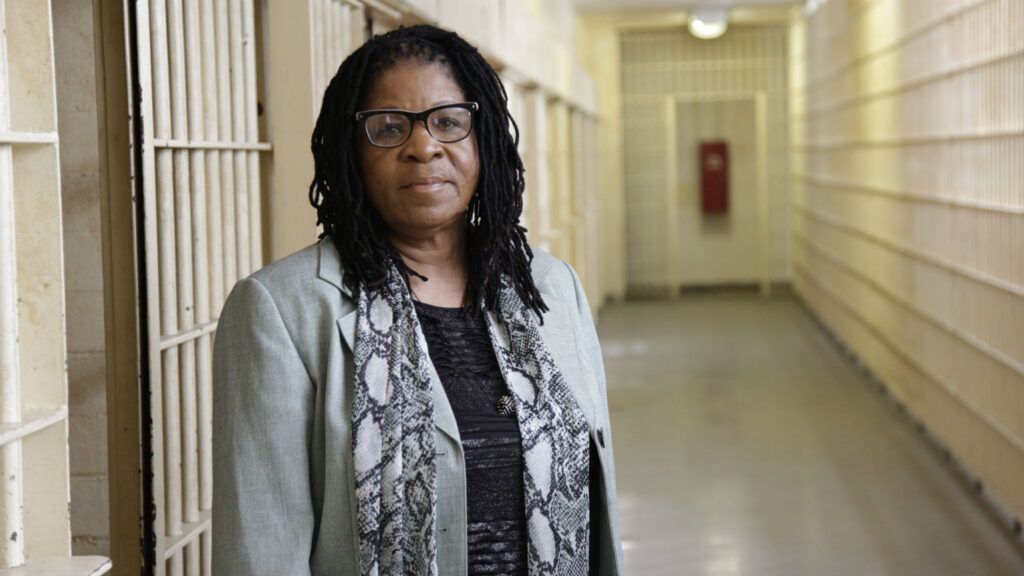Susan Burton knows how difficult it is to start over.
 The author of a new memoir, Becoming Mrs. Burton, and founder of A New Way of Life Re-Entry Project, a nonprofit that helps people rebuild their lives after incarceration, has spent more than twenty years trying to earn her clean slate. Burton grew up in a rough neighborhood in South Los Angeles. Her home life was dysfunctional and often violent. She was sexually abused as a child and was a survivor of rape by the time she hit her teen years. But it was the tragic death of her five-year-old son, K.K., in 1982 that finally broke Burton’s spirit. He was playing in the street when an off-duty police officer struck and killed him with his car.
The author of a new memoir, Becoming Mrs. Burton, and founder of A New Way of Life Re-Entry Project, a nonprofit that helps people rebuild their lives after incarceration, has spent more than twenty years trying to earn her clean slate. Burton grew up in a rough neighborhood in South Los Angeles. Her home life was dysfunctional and often violent. She was sexually abused as a child and was a survivor of rape by the time she hit her teen years. But it was the tragic death of her five-year-old son, K.K., in 1982 that finally broke Burton’s spirit. He was playing in the street when an off-duty police officer struck and killed him with his car.
“I wasn’t able to manage the pain anymore,” Burton tells Guideposts.org.
She began to drink heavily and soon turned to drugs to numb her grief.
Burton spent the next two decades cycling in and out of prison for nonviolent crime and drug possession. Each time she was released, she told herself she’d get her life back on track. Each time, the pain of her loss and the trauma of her early years brought her back to drugs – crack, cocaine, and alcohol.
The cycle was exhausting, but it felt unbreakable to Burton who found only punishment instead of the promised rehabilitation of prison life.
“There was no rehabilitation at all happening inside of prison,” Burton says. “Basically, you would go in, you would be stripped of all your dignity, all of your dreams and all of your hopes and your humanity. Then you’re released one day. You come out and you try to make a life for yourself, but there are so many barriers and you are totally unprepared. It’s like holding onto this rope and you see the rope unraveling and you just fall back again into the same things that brought you there in the beginning.”
Burton remembers one release clearly, for all the wrong reasons. It wouldn’t be the last time she went to prison, but it felt like a wake-up call all the same.
“The officer said, ‘We have a bed waiting for you,’” Burton recalls. “And I’m all like, ‘No I’m not coming back, I’m going to get a job.’ He says to me, ‘The only job you’ll be able to get is a job inside of a prison.’”
It wasn’t until a friend behind bars directed her to a treatment center in an affluent Santa Monica neighborhood and got her a job as a live-in caregiver that Burton began to confront the buried trauma fueling her relationship with drugs and her trips to prison.
“I didn’t know anything about treatment,” Burton says. “I didn’t understand that I suffered from a disease and there was a solution to it. [In treatment] I built a personal relationship with God. I began to heal and process some of the misfortune of my earlier days, the loss of my son. And I became stronger. I went through a process of forgiveness and letting go. And I began to question why programs and processes that I found in Santa Monica were not available to women in South L.A.”
Treatment was a blessing to Burton, but it also opened her eyes to the racial injustice that permeated the California legal system.
According to the New York Times, decades of research has shown that criminal courts sentence black defendants more harshly than whites for the same offenses. In her Santa Monica treatment center, Burton saw that predominately white, wealthy drug offenders were sentenced to court-appointed drug treatment centers or were punished with community service for their crimes, whereas she was continuously sent to prison for minor drug offenses.
“I can remember being in a meeting and a man standing up saying he hated the color green because he had an accident under the influence and had been sent to court and in court, his sentence was to paint the jail, and he painted the jail green,” Burton recalls. “And he hated the color green because he’s spent so much time painting that jail. I sat there and listened to him and I thought, ‘Hell, I had to live in the jail.’”
After she finished treatment and saved up enough money from her job as a live-in caregiver, Burton decided to do something brave and extraordinary.
Most people choose to rebuild their lives far away from the places and people that hurt them in their past. Burton decided to grow something beautiful from her misfortune, planting it right in the middle of her old neighborhood, where so much violence and tragedy had taken place. She bought a tiny bungalow in South L.A., filled it with bunk beds and other necessities, then made trips to a place called skid row where a Greyhound bus would drop off former female inmates after they had served their sentences.
Her goal was straightforward, but not simple: to convince as many women as she could to come live with her, drug and crime free, and to help them find the fresh start she was already working on.
“It was ten of us living in the house and we all just kind of pooled our money together to pay the bills and create a community of women helping women,” Burton says of the early years of her nonprofit. “We would share the resources and we were all just helping one another. It was magical.”
Her work eventually caught the attention of the California Wellness Foundation and an agency called Community Partners. Both groups helped Burton attend classes on creating and managing a nonprofit. They also aided her in applying for a 501(c)(3) and donated $50,000 dollars in fellowship money to her cause. As a nonprofit, Burton was able to raise even more funds from angel investors and silent donors to open five more houses, eventually helping over a thousand women find a better life after prison.
A New Way of Life Re-Entry Program offers everything from legal services, employment opportunities, and case management to organizing the community to help change harmful policies that affect former inmates.
“The first step is to get her there and introduce her to the other women and usually she has a few friends in the house that will comfort her and help her feel welcome,” Burton says of the process every woman goes through at one of her homes. “Then we get her medical care and any types of public benefits that she’s entitled to: a driver’s license, birth certificate, social security cards. All those things take about a month to get into place. And then we begin to support her in going back to school, finding work or getting back into touch with her children. It’s just different for everybody.”
Burton knows we have a long way to go before our justice system corrects itself. It’s why she’s running her nonprofit, helping women who’ve fallen through the legal cracks. It’s also why she’s sharing her own journey in her intimate memoir, Becoming Mrs. Burton.
The book, which details Burton’s abuse as a child, rape, violence and her dehumanizing stints behind bars, is slowly making its way into prisons across the U.S. per Burton’s wishes. Over 11,000 copies have been sent to facilities across the country and through her website. People who know someone behind bars that could benefit from reading Burton’s story can order a book for them, free of charge.
“I see women who are so hungry for something better for their lives,” Burton says. “My hope is that women will read the book and be inspired to fight for the best that they can be. There is life and success after incarceration, but you must work for it.”
To send a free copy of Susan Burton’s book, Becoming Mrs. Burton, to an inmate, visit becomingmrsburton.com.





